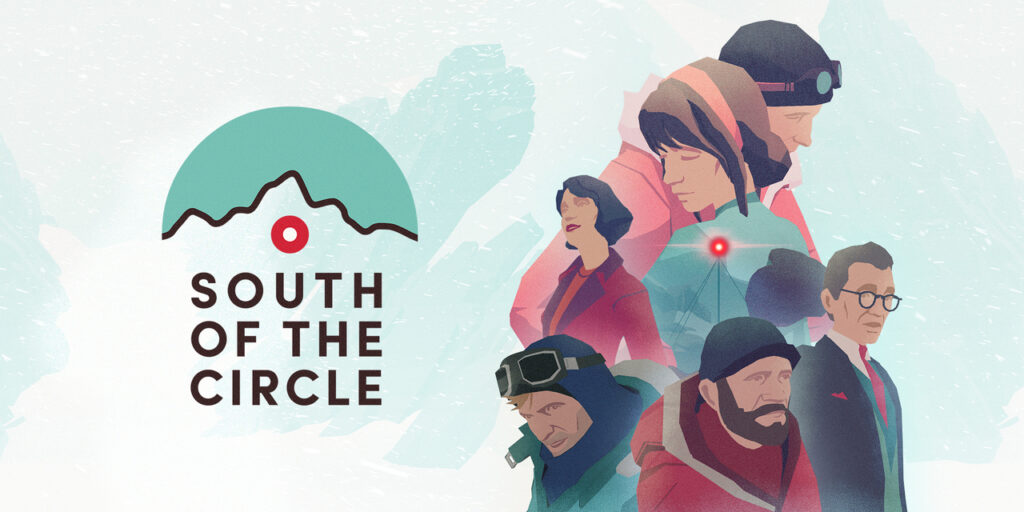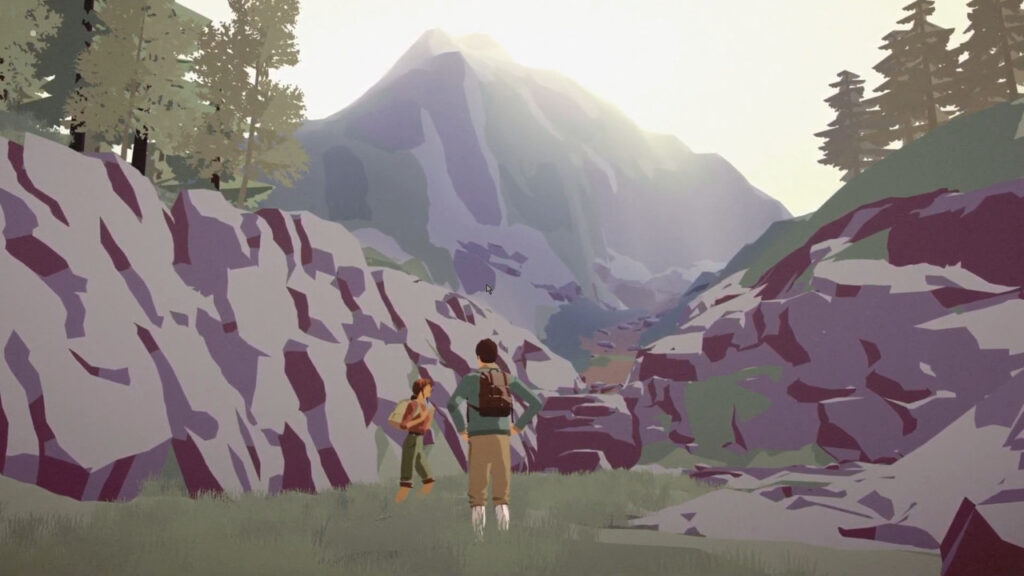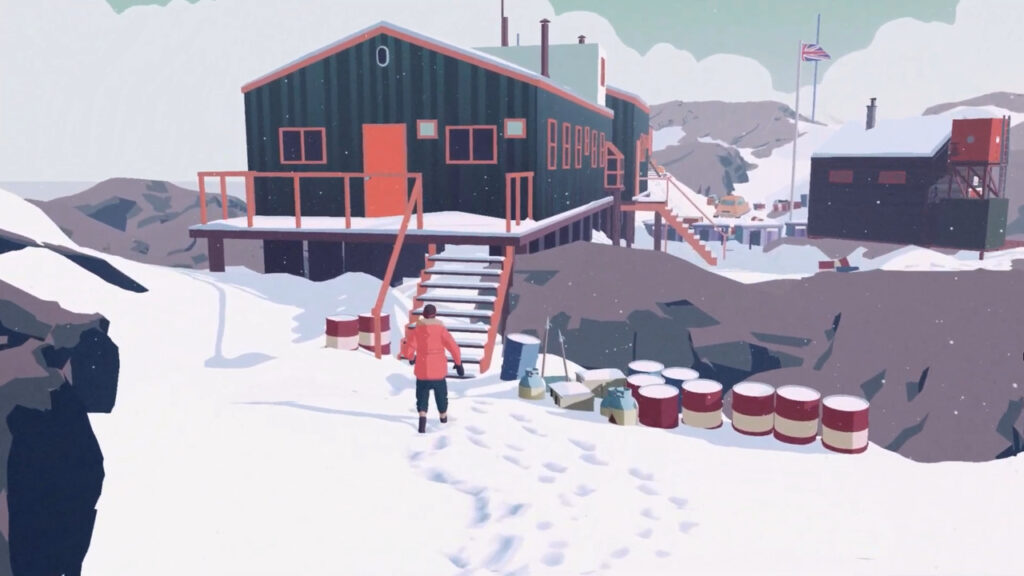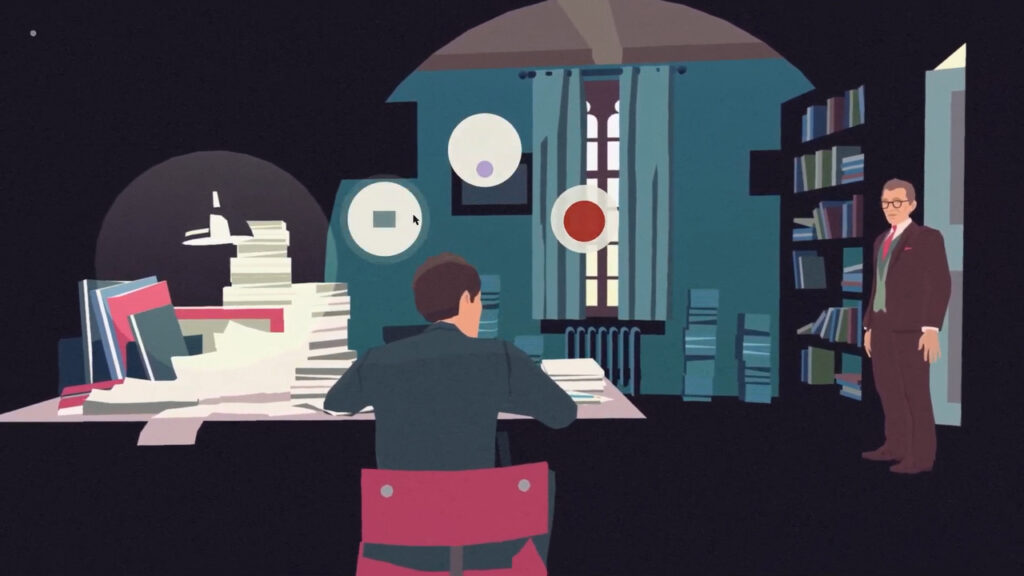
Developer: State of Play
Publisher: 11 bit studios
Platform: PC, PS4, PS5, Switch, Xbox One, Xbox Series X|S, Apple Arcade
Tested on: PC
South of the Circle – Review
In our continuous battle against the backlog, we’re tackling another title that slipped through the cracks today. Developer State of Play’s South of the Circle is a game that was originally released in early August of 2022. The icy setting and focus on heavy themes make it feel like a game that is perhaps better enjoyed on a dreary winter afternoon, however, so perhaps our timing for this one isn’t too terrible. Is South of the Circle a hidden gem we almost missed or should it have remained buried in the backlog?
Story
We’ll try to refrain from posting major spoilers, as South of the Circle is a narrative-driven title first and foremost, perhaps more so than any other game we’ve reviewed recently. Our protagonist, Peter, is a lecturer at Cambridge University. He’s obsessed with clouds and it’s this obsession that lands Peter in a spot of trouble. When South of the Circle begins, Peter wakes up in the wreckage of a plane that crashed in the middle of the Arctic tundra. Our friend had traveled here, hoping to study the cloud patterns of the Arctic, but must suddenly attempt to survive the harsh conditions and try to find help. This help would not just be for himself but also for the plane’s pilot, who is unconscious and has a broken leg. Fortunately for Peter, there is an Arctic research station within walking distance, so he sets out to reach it. As he limps towards his potential saviors, he recalls key moments from the past months of his life as a way to distract himself from the icy storm that swirls around him. It’s this journey that forms the basis for South of the Circle’s narrative. The viewpoint alternates between Peter’s struggles against what nature throws at him and flashbacks to everything that led up to the crash, beginning with Peter’s peaceful life in Cambridge and his budding romance with his colleague Clara.
Of note is that the looming threat of the Cold War is noticeable in the background during the flashback scenes. The story remains firmly focused on Peter himself, but the influence of the war is ever-present, both in how characters interact with one another in dialogue and in specific events that play out. For the most part, South of the Circle is fantastically written, and the narrative deals with heavy themes that are still relevant today, including repressed emotions, sexism, and the grey areas of war. Unfortunately, South of the Circle doesn’t quite stick its landing. After spending three hours in the company of Peter, and getting to know him quite well, the ending felt like a letdown as things simply fizzled out and felt inconsequential. Before you get to that point, there are plenty of moments that will successfully tug at your heartstrings and this is a story where the journey is more important than the destination, but we couldn’t help but feel disappointed with how South of the Circle rounded everything up. That said, everything leading up to that ending is definitely worth it, and the game’s deliberately slow pacing ensures that the story beats have the emotional impact that the developer intended.
Graphics
The minimalist art style that South of the Circle adopts is reminiscent of 1930’s travel posters, and it works wonderfully. The pastel tones and dramatic lighting effects help to create contrast between the events that unfold on screen, and the game also makes great use of negative space to draw attention to key visual elements. The undeniable visual highlights, however, are the moments where the story actually transitions between different time periods. When Peter enters the Arctic research station, for example, on the other side of the door is his Cambridge office. A chilling trek through the snow becomes a brisk walk to the train station where he meets the love of his life. The impact of these transitions, both as a storytelling element and aesthetically, never disappoints. Visual performance is decent enough, although we did notice the occasional graphics hiccup, like Peter clipping through parts of the environment, but nothing that detracted massively from the overall visual experience.
Sound
Composer Ed Critchley’s soundtrack never takes center stage, instead aiming to underline key moments in the story. The music is deliberately understated, often consisting of nothing more than a simple piano tune. Through clever use of musical callbacks, including a specific romantic tune that plays during appropriate scenes, there is a musical consistency that ties everything together. The individual sound effects don’t necessarily stand out, but they are implemented during time transitions in creative ways, evoking a cinematic feeling. Finally, the game also features voice acting, and although the dialogue doesn’t always flow very naturally, the actors do their best with the given material. Peter and Clara stand out in particular here, with audio performances that match their on-screen personalities.
Gameplay
It’s difficult to judge South of the Circle’s gameplay because there is so little of it. This is a narrative-driven experience first and foremost, and while we’d technically label it an adventure game, that’s only because it offers just enough interactive elements to not be considered a visual novel or a walking sim. At its most basic level, you could see South of the Circle as a point-and-click adventure title that omits most of the gameplay elements you’d expect, like interacting with your inventory or solving puzzles. There are moments when you interact with objects, like twisting a radio knob, but these are rare and never challenging. Taking control of Peter, you walk around and talk to other characters as the story unfolds in front of you. As you are talking with other characters, you’re occasionally presented with choices that drive the conversation in a certain direction. Rather than opting for a traditional dialogue tree, however, developer State of Play replaced phrase choices with small bubbles that represent Peter’s emotions. These are vague, and the game never really clarifies what each icon stands for, whether it’s a big red circle or a small blue square, but eventually, you’ll start to read Peter’s emotional responses and start to choose accordingly. When you need to make a dialogue choice, this is handled as a Quick Time Event, and if you don’t respond in time, the game makes a choice for you. This does mean that South of the Circle feels more like an interactive movie and less like a game where you have agency over Peter.
Given that you get to make these choices at key points in the story, we expected there to be a branching narrative, or at least that these choices would have some sort of impact. We were wrong about this. South of the Circle sticks to a single storyline, and the choices you make only serve to flesh out Peter’s own personality. This means that there is very little incentive to replay South of the Circle once you’ve made it to the end. It’s not a very long game either, clocking in at around three hours. If we were to judge South of the Circle purely on its merits as a video game, we’d be very disappointed. There is very limited interactivity, and what’s present doesn’t feel like it actually matters. It’s woefully short and has no replay value. However, if you look at it as an interactive movie rather than a game, it becomes a different story. State of Play has made a bold choice to release South of the Circle as it is, but it pays off, for the most part. If the ending wasn’t so underwhelming, this would be a must-play title. As it stands, it’s still a title that is worth looking at, as the journey itself is still compelling and the game hits the right notes more often than not.
Conclusion
Falling somewhere between a visual novel and a point-and-click adventure title, South of the Circle is underwhelming as a video game but excels as a storytelling device. The striking audiovisual presentation allows players to immerse themselves in the character of Peter in a way that a completely non-interactive medium simply wouldn’t be able to. If you approach South of the Circle with the right expectations, you’ll find a fantastic little experience that is only undercut by its own ending.
South of the Circle - Review,








No Comments